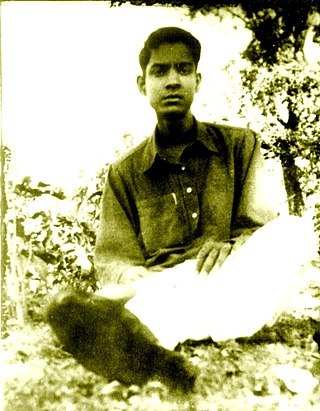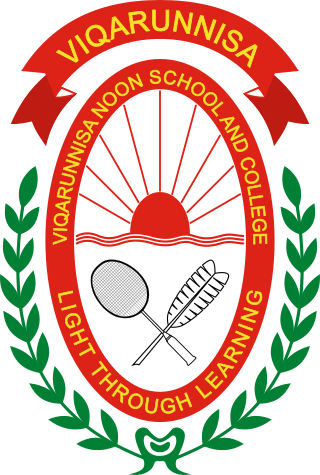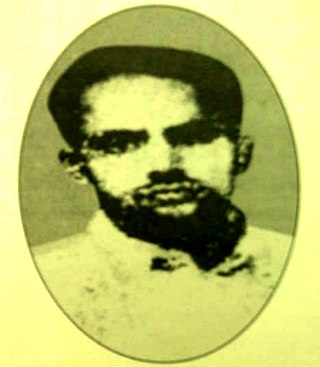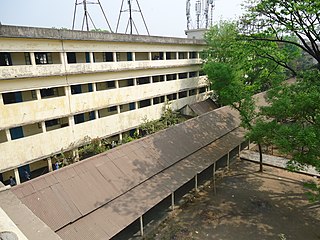Azimpur may refer to:
Azimpur may refer to:
Azimpur Government Girls' School and College is a secondary and higher secondary school in Azimpur, Dhaka, Bangladesh. It was established in 1957 by the Welfare Association of Government Employees. In 1999 the school had an enrollment of some 2,700 students and a faculty of 82.

Abul Barkat was a protester killed during the Bengali Language Movement protests which took place in the erstwhile East Pakistan, in 1952. He is considered a martyr in Bangladesh.

Viqarunnisa Noon School & College, also known as VNSC, is an all-girls higher secondary school and college in Dhaka, Bangladesh. It has 25,000 students at four campuses in the city. It is named after Viqar un Nisa Noon.

Shafiur Rahman is considered in Bangladesh to be a martyr of the language movement which took place in the former East Pakistan.

Abdus Salam was a demonstrator who died during the Bengali Language Movement demonstrations which took place in the erstwhile East Bengal, Pakistan in 1952. He is considered a martyr in Bangladesh.

New Market Copy is the largest commercial shopping market in Bangladesh in north of Azimpur, Dhaka. It is situated on the opposite side of Chandni Chowk.
Azimpur is an old region in the old part of Dhaka, capital of Bangladesh. The region is named after 7th Mughal Emperor Azam Shah who was the youngest son and successor of Mughal Emperor Aurangzeb. Other accounts attribute the name to Azim-us-Shaan, the Nayeb-e-Nazim of Dhaka during the early 18th century. This area started to decay in the colonial era. In 1850 Azimpur shown as a no man's land in the map of surveyor general. In 1950 this area redesigned as the government employee's residence.

Agrani School and College was established at Azimpur, Dhaka, Bangladesh, in 1957 as a kindergarten. From the inception, the medium of instruction was English, although vernacular was also taught in all classes. It was upgraded into a secondary school for girls in 1967. It introduced higher secondary courses in 1994, when it got a new status of school cum college. It offers courses in humanities, commerce and science. There are approximately 4,500 students.
Selina Parvin was a Bangladeshi journalist and poet. She is one of the intellectual martyrs killed by Al-Badr on 14 December, immediately before the victory after the 9-month-long war of independence of Bangladesh in 1971. This day later came to be commemorated as the intellectual martyr day. As a journalist she used to work for Weekly Begum, Weekly Lalana and Shilalipi. She was buried in Azimpur Graveyard on 18 December 1971.

Anisuzzaman was a Bangladeshi academic of Bengali literature.
Siddika Kabir was a Bangladeshi nutritionist, academic, cookbook author, and cooking show television host. A professor, Kabir hosted, and guest starred in numerous television shows featuring Bangladeshi cuisine, including Siddiqua Kabir's Recipe on NTV Bangla.
New Paltan is near Dhaka's New Market in Azimpur. Several markets and a number of educational institutions are nearby. Border Guards Bangladesh headquarters is in neighbouring Pilkhana.

Government College of Applied Human Science is a government college formerly known as the College of Home Economics.
Azimpur Mosque is located beside the Azimpur graveyard in Dhaka. A Persian inscription in the mosque indicates that the mosque was built in 1746 AD by Fayzul Alam. The mosque was built during the reign of Mughal Nawab Alivardi Khan and is the last existing example of a mosque structure with a single dome and a flanking half-domed vault on both sides.
Khandokar Mahbub Uddin Ahmad (1925-2014) was a Bangladeshi politician and the former Member of Parliament from Dhaka-9.
Abul Hasnat was a Bangladeshi politician and lawyer. He was the founding member of the Bangladesh Nationalist Party standing committee.
Maḥfūẓ al-Ḥaqq ibn ʿAzīz al-Ḥaqq ibn Irshād ʿAlī ad-Dākawī, or simply Mahfuzul Haque, is a Bangladeshi Deobandi Islamic scholar, politician, educator and public speaker. He is the former vice-president of Hefazat-e-Islam Bangladesh, secretary general of Befaqul Madarisil Arabia Bangladesh, chancellor of Jamia Rahmania Arabia, Dhaka and president of regional Qawmi education board Ittefaqul Madarisil Qawmia Muhammadpur. He is also a member of the standing committee of Al Haiatul Ulya and was the secretary-general of Bangladesh Khelafat Majlish.

The historical shrine of Dayera Sharif Khanqah, commonly known as Bara Dayera Sharif, is situated in the Azimpur locality of Dhaka. The Persian word Dayera means "circle" or "work area". As a rule, the heirs of the Dayera Sharif never go outside the area, except for pilgrimage. The Azimpur Dayera Sharif was established by Shah Sufi Sayed Muhammad Dayem who came at Dhaka in 1766-68 AD. It is currently under the supervision of his seventh generation. Shah Sufi Syed Shah Ahmedullah Jubayer has been the overall supervisor of Dayera Sharif since 1998. The successor of the Sufi dynasty is known as Gaddi Nashin, who sits on the Gaddi to serve people.
Muhammad Nurul Haque Miah was a professor at Dhaka College and the head of its Department of Chemistry. He is renowned for writing high school and degree textbooks.